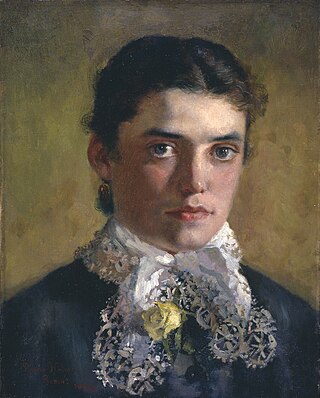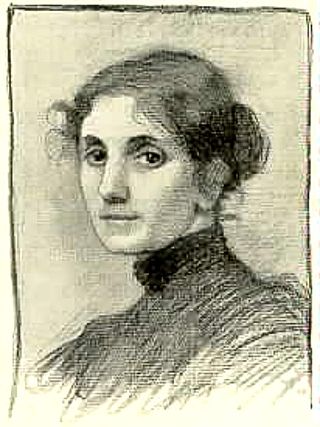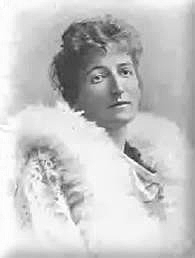
The World's Columbian Exposition, also known as the Chicago World's Fair, was a world's fair held in Chicago from May 5 to October 31, 1893, to celebrate the 400th anniversary of Christopher Columbus's arrival in the New World in 1492. The centerpiece of the Fair, held in Jackson Park, was a large water pool representing the voyage that Columbus took to the New World. Chicago won the right to host the fair over several competing cities, including New York City, Washington, D.C., and St. Louis. The exposition was an influential social and cultural event and had a profound effect on American architecture, the arts, American industrial optimism, and Chicago's image.

Rhoda Holmes Nicholls was an English-American watercolor and oil painter, born in Coventry, England. She studied art in England and Italy, and her work was viewed and praised at the time by the queens of both countries. A body of work was created in South Africa by Nicholls of Port Elizabeth area's scenery, wildlife and architecture. She lived there on her brothers' 25,000-acre ostrich farm for one year.

Marianne Stokes was an Austrian painter. She settled in England after her marriage to Adrian Scott Stokes (1854–1935), the landscape painter, whom she had met in Pont-Aven. Stokes was considered one of the leading women artists in Victorian England.

Henrietta Emma Ratcliffe Rae was a British painter of the late Victorian era, who specialised in classical, allegorical and literary subjects. Her best-known painting is The Lady with the Lamp (1891); depicting Florence Nightingale at Scutari.

Hermione von Preuschen (1854–1918) was a German painter and author. She is also referred to by the names Erminia Preuschen, Hermine von Preuschen, and Hermine Preuschen. She worked for many years in Italy, but also traveled long and extensively.

Thorborg Ragnhild Rappe, was a Swedish pedagogue and Baroness. Alongside Emanuella Carlbeck, she is counted as a pioneer in the education of students with intellectual disability in Sweden, and she represented her country at the 1893 Congress of Women in Chicago.

Euphrosine Beernaert was a Belgian landscape painter.

Elise Konstantin-Hansen (1858–1946) was a Danish painter and ceramist. She developed her own naturalistic style, often painting sea birds, animals, plants and beach scenes.

The Woman's Building was designed and built in June 1892, for the World's Columbian Exposition held in Chicago in 1893; under the auspices of the Board of Lady Managers. Out of the twelve main buildings for the Exhibition, the Woman's Building was the first to be completed. It had an exhibition space as well as an assembly room, a library, and a Hall of Honor. The History of the World's Fair states, "It will be a long time before such an aggregation of woman's work, as may now be seen in the Woman's Building, can be gathered from all parts of the world again." The purpose of the building was to highlight woman's achievements, and challenge the traditional ways of thinking at the time it was built. The Woman's Building was planned, designed, and decorated entirely by women under the direction of the board of lady managers.
Emilie Jenny Weyl, (1855—1934) was a French sculptor. She exhibited at the 1893 World's Columbian Exposition in Chicago, the 1889 Exposition Universelle and the 1900 Exposition Universelle, both in Paris.

Marie Katharine Helene Tannæs (1854–1939), was a Norwegian painter known for her landscape paintings.

(Maria Helena) Ellen Jolin was a Swedish writer, painter and graphic artist.
Paula Bonte (1840-1902) was a German landscape painter.

Countess Maria von Kalckreuth (1857-1897) was a German painter known for her portraits.

Marie von Keudell (1838–1918) was a German painter known for her landscape painting.
Johanna Kirsch (1856-1907) was a German painter known for her portrait and genre paintings.
Clara Augusta Amalie Emma Lobedan (1840–1918) was a German painter, watercolorist, pastelist, ceramicist, and craftsman.
Auguste Ludwig (1834-1901) was a German genre painter.
Bertha Schrader was a German painter, lithographer, and woodblock print-maker.
Helene Marie Stromeyer was a German painter known for her floral and landscape paintings.













